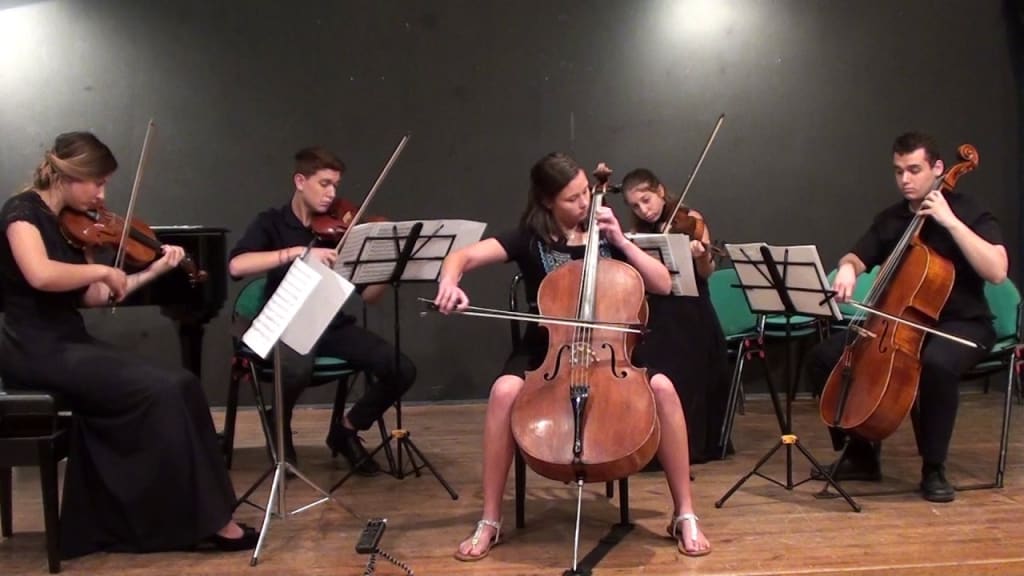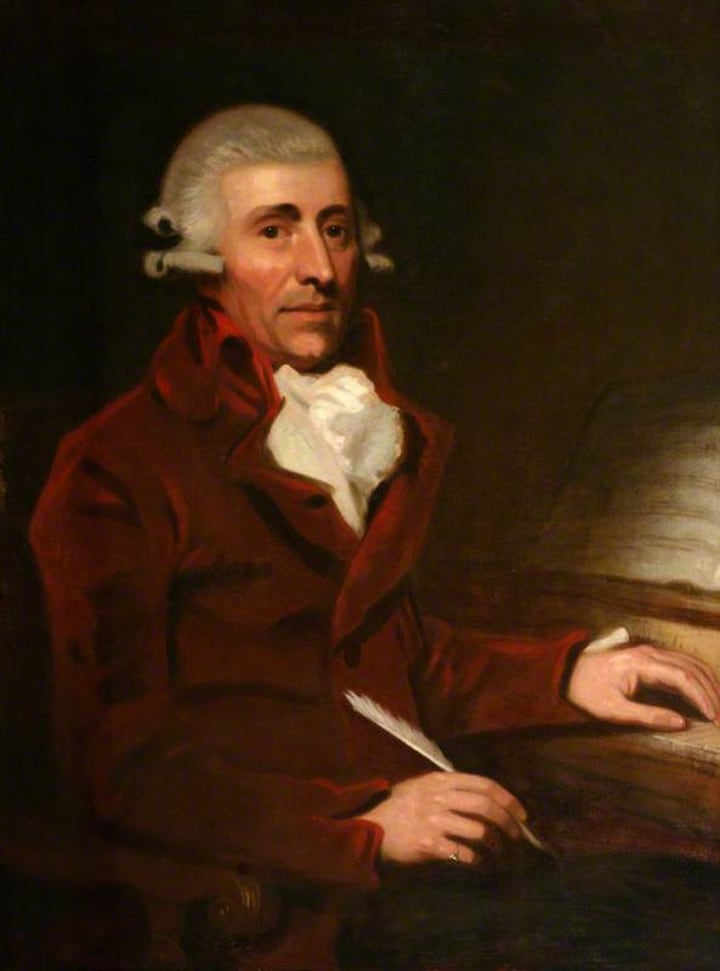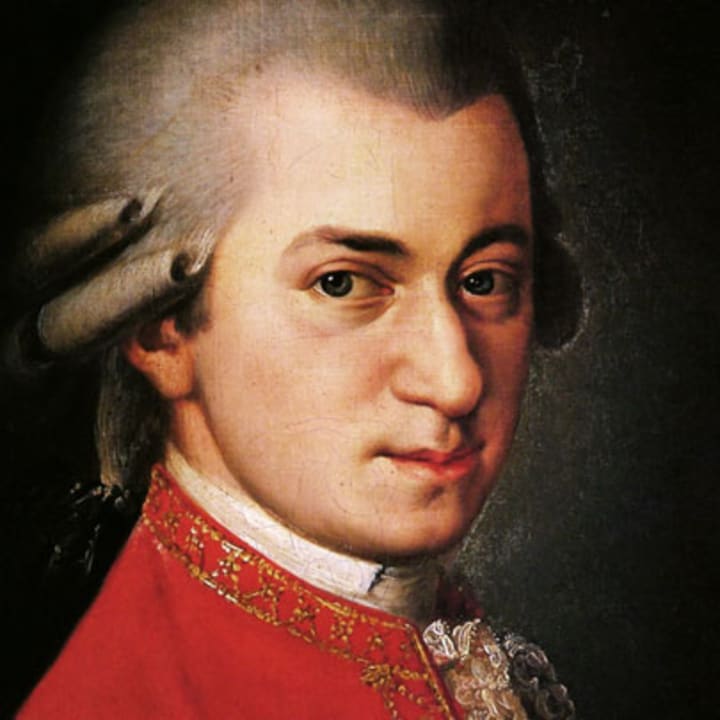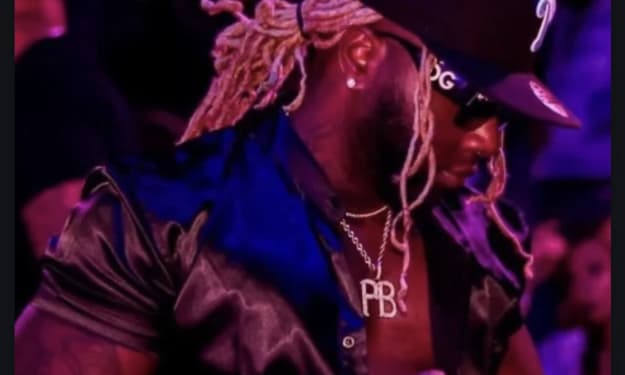The Classical Era in Music
True Classicism was a relatively short interval between the Baroque and Romantic eras

The term “classical” is often used to mean what might otherwise be called “serious” music, to distinguish it from pop, rock, folk, jazz or any other classification. These terms are never satisfactory, however, and often give rise to confusion.
That said, the term “Classical era in music”, properly defined, only applies to the relatively brief period between the end of the Baroque period (conveniently marked by the death of J S Bach in 1850) and the rise of Romanticism around 1820. Its beginning corresponded with the general rejection of Baroque and Rococo taste throughout Europe and a conscious looking back to the classical models of Ancient Greece and Rome, or at least to how they were imagined to be. This trend could be seen in visual art, furniture design, architecture, literature and much else. In music there were no classical parallels to look back to, so classical music was something quite new and original, although built on what had gone before.
It would also be a mistake to assume that every composer who had been writing in the Baroque style suddenly decided to become “classical”. These things happen gradually, and there were many cases of “overlap”, as there were at the other end of the period when Romanticism started to take hold.
That said, there are three well-known composers who fall squarely within this period and whose works largely typify the classical era in terms of style. These three also qualify for the “famous” label, their names being easily recognisable by most people. They are Joseph Haydn, Wolfgang Amadeus Mozart and Ludwig van Beethoven.
Joseph Haydn (1732-1809)

An Austrian, Haydn was for many years court composer to the Esterhazy family, one of the richest and most powerful families of central Europe. He was required to run the musical establishment of the court, which included producing a constant stream of new compositions for the orchestra to play. As such, Haydn developed the symphony into the form that it has had ever since, writing a total of 106 during his lifetime. He also wrote more than 70 string quartets, more than 60 piano sonatas, and more than 40 piano trios, plus concertos, masses, operas and oratorios.
Not all of the above works were composed during his employment with the Esterhazys, because he eventually “escaped” when Prince Nikolaus died in 1790 and his successor, the far less musical Prince Anton, had no need for Haydn’s services. Haydn was then free to travel widely and accept commissions from orchestras all over Europe.
However, the 30 years of isolation that Haydn spent as a court composer on a remote estate meant that, in his own words, he was “forced to be original”. Haydn was able to experiment with forms and ensembles without undue influence from outside, and his later “freedom” enabled him to pass on his knowledge and be a huge influence on his friend Mozart and his pupil Beethoven.
Wolfgang Amadeus Mozart (1756-1791)

Mozart was the greatest composer of the Classical era, and many would say of any musical era. Although he died at the age of 35 he produced more than 600 compositions, including 41 numbered symphonies (although more recent scholarship has questioned the authenticity of some of the early ones), 27 piano concertos, 22 operas, and a host of string quartets, piano sonatas, sacred music, and much else besides.
He started composing at a very young age, with the earliest works credited to him having been written at the age of five or six, and his first symphony when he was only eight. However, these early works are clearly derivative and not of any great quality (or may not even be his – see above). That said, it did not take him long to get into his stride, with the exquisite motet “Exsultate, Jubilate” being written in 1773 at the age of 17 (with 164 other compositions already under his belt, according to the Köchel catalogue!). From this point on, Mozart was clearly a fully mature composer with his own distinct and original style.
One of the most important things to note about Mozart is that his originality, and his dominance of the Classical era, makes it very difficult to state what it is that constitutes “Classicism” without reference to Mozart. If we look at other art forms of this era we can distinguish elements that set a particular work in the classical mould, such as a certain formalism or even stiffness of mood. We can see this in the “Augustan” poetry of Alexander Pope or the neo-classical paintings of Jacques-Louis David.
However, there is little sense of looking back, or of reliance on formality, in the works of Mozart, or even of Haydn. Instead, there is enormous energy, coupled with great beauty and even humour, in musical classicism.
One of Mozart’s works that makes this point very clearly is his “A Musical Joke” (K.522) written for two horns and string quartet. This piece is most famous for the final three chords that are often played ad lib but are written as deliberate discords, as though the performers are incompetent. However, the whole piece is a satire on the repetitive formalism apparent in the works of contemporary composers who were clearly way below Mozart and Haydn in terms of writing skill. Many of those works are now lost to us, and their composers forgotten, which is why we do not have a complete view today of what the classical era in music was actually like.
Ludwig van Beethoven (1770-1827)

Beethoven counts as the third classical “great” because he provided the bridge between the Classical and Romantic eras. However, he was another truly original composer who cannot be said to typify either Classicism or Romanticism.
Beethoven was a German (of Dutch descent) who spent much of his life in Vienna. He arrived there in 1792 to study under Haydn, shortly after Mozart had died. The influences of these two composers was therefore considerable, although Beethoven did not start to compose as his main occupation until a year or two later.
His early works, such as the first two symphonies (1800 and 1802) and first six string quartets (1798-1800) clearly show the influence of Haydn and Mozart, but he was soon able to develop a style of his own, as is evident from the major change in direction that is usually described as his “middle period”, from 1803 to 1814.
This largely coincided with the beginning of Beethoven’s deafness, which became progressively worse during the rest of his life, and his coming to terms with this condition. He expressed dissatisfaction with his life and work to date and determined to strike out in new ways. For one thing, he now composed more large-scale works that required much larger orchestral forces than had been gathered together in a concert venue up to that time. This was not only because he needed them to make a louder noise that he could hear, but also because he wanted to say new things through his music that spoke of struggle and the overcoming of forces that kept the human spirit in chains.
It is famously recorded that Beethoven originally intended to dedicate his Third Symphony to Napoleon Bonaparte, whom he regarded at first as a liberating force in Europe, but he changed his mind when Napoleon declared himself to be an Emperor and was therefore only interested in personal power. The symphony itself is regarded as both the ultimate mature expression of Classicism and the first example of Romanticism. As his music developed, it became increasingly used as a vehicle for the expression of emotion and feeling. This purpose was not entirely absent from the Classical tradition, particularly in the works of Mozart, but it is the feature that most clearly demonstrates the difference between the two eras.
Beethoven’s later development was very much away from Classicism, and his legacy, inherited by composers such as Brahms and Schubert, was therefore a Romantic one.
Other Composers of the Classical Era
Franz Schubert (1797-1828) shares with Beethoven the accolade of being one of the fathers of Romanticism, although his early works are classical in nature. He was taught composition by Antonio Salieri, a near contemporary of Mozart’s, and was thus imbued with classical forms to which his natural gift for melody was added.
The sons of Johann Sebastian Bach, particularly Carl Philipp Emanuel (1714-88) and Johann Christian (1735-82) were important links between the Baroque and Classical eras.
Christoph Willibald Gluck (1714-87) was a notable composer of operas and ballets during the early Classical period.
Muzio Clementi (1752-1832) wrote many piano sonatas in the Classical style but his work looked forward to the Romantic period, as did that of his Irish pupil John Field (1782-1837).
William Boyce (1711-79) is the only English composer of note during this period, although his music harks back to the Baroque style.
About the Creator
John Welford
I am a retired librarian, having spent most of my career in academic and industrial libraries.
I write on a number of subjects and also write stories as a member of the "Hinckley Scribblers".






Comments
There are no comments for this story
Be the first to respond and start the conversation.